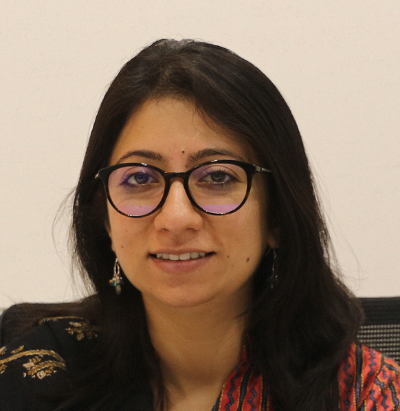Economics and History Programme
The department recommends that students complete mathematics in Classes 11 and 12 to be eligible for any economics-related major or minor.
For students who have not studied mathematics in Classes 11 and 12 to be eligible for any economics-related major or minor, they need to:
a) Take MAT 1000: Calculus (a 1000-level course) offered by the Mathematics department in their first semester and
b) Secure at least an A- to be eligible
Note, there may be an entry test requirement for MAT 1000 which will be set by the Maths department. Please check the mathematics department website for more details.
Major Requirements
Students admitted to Ashoka in 2022 and thereafter fall within the NEP Programs. Credit requirements for interdisciplinary majors are listed below.
Four-year Economics and History UG degree (BA Hons. degree) requires 20 major courses, each of 4 credits. Students need to complete 10 economics and 10 history courses. The structure of the 10 economics courses is the following:
- A mandatory core of 5 courses which include — Introduction to Economics, Mathematics for Economists, Microeconomics 1, Macroeconomics 1, Statistics for Economics.
- The remaining 5 courses can be any other 2000 level or higher-level course subject to prerequisites being cleared with no more than one cross-listed course.
For the History course requirements in this major, please contact the History Department.
In addition to this one can do a four-year BA Honours with Research degree with an additional Dissertation of 12 credits. The exact breakdown of the year-long sequence will be announced after the university discussions by the end of the academic year 2024-25.
Three-year Economics and History UG degree (BA degree) comprised of 15 major courses, each of 4 credits. Students need to complete at least 7 courses in economics and history. The structure of the 7 economics courses is the following.
- A mandatory core of 4 economics courses which include — Introduction to Economics, Mathematics for Economists, Microeconomics 1, Macroeconomics 1.
- The remaining 3 courses can be Statistics for Economics or any other 2000-level or higher-level course subject to prerequisites being cleared with no more than one cross-listed course.
Sample Curriculum Structure (For students admitted in 2022 and later)
|
Semester I |
Semester II |
Semester III |
Semester IV |
Semester V |
Semester VI |
|
Introduction to Critical Thinking |
Foundation Course 4 |
Foundation Course 6 |
Foundation Course 7 |
Foundation Course 8 |
History 5 |
|
Foundation Course 1 |
Foundation Course 5 |
History 1 |
Economics Elective 1 |
Economics Elective 3 |
History 6 |
|
Foundation Course 2 |
Introduction To Economics |
Microeconomic Theory I |
History 2 |
History 3 |
History 7 |
|
Foundation Course 3 |
Math for Economics |
Macroeconomic Theory I |
Economics Elective 2 |
History 4 |
Economics/History Elective Course |
The above table is only a sample curriculum structure. There could be other possibilities, e.g. taking more economics electives in the 6th semester.
Faculty

Assistant Professor of Economics, Ashoka University
Ph.D. University of Alabama

Assistant Professor of Economics, Ashoka University
Ph.D. University of California, Irvine

Associate Professor of Economics, Ashoka University
Ph.D. Indian Statistical Institute

Associate Professor of Economics, Ashoka University
Ph.D. University of Pennsylvania

Associate Professor of Economics, Ashoka University
Ph.D. University of California, Riverside

Head of the Department, Economics and Professor of Economics, Ashoka University
Founding Director, Centre for Economic Data and Analysis, Ashoka University
Ph.D. Delhi School of Economics

Distinguished University Professor of Economics, Ashoka University
Ph.D. University of Delhi

Assistant Professor of Economics, Ashoka University
Ph.D. New York University

Assistant Professor of Economics, Ashoka University
Ph.D. University of Michigan

Professor of History, Ashoka University
Ph.D. Delhi University

Professor of Economics, Ashoka University
Ph.D. University of Wisconsin-Madison

Associate Professor of Economics, Ashoka University
Ph.D. Indian Statistical Institute

Assistant Professor of Economics, Ashoka University
Ph.D. University of British Columbia

Chancellor, Professor of History, Ashoka University
D.Phil. Oxford University

Associate Professor of History, Ashoka University
Ph.D. Jawaharlal Nehru University

Assistant Professor of Economics, Ashoka University
Ph.D. University of Warwick

Professor of Economics, Ashoka University
Ph.D. University of Minnesota

Assistant Professor of Economics, Ashoka University
Ph.D. University of California - Berkeley

Assistant Dean, Academic Affairs, Associate Professor of Economics, Ashoka University
Ph.D. Indian Statistical Institute

Associate Professor of Economics, Ashoka University
Ph.D. University of Oxford

Professor of History, Ashoka University
Ph.D. Jawaharlal Nehru University






